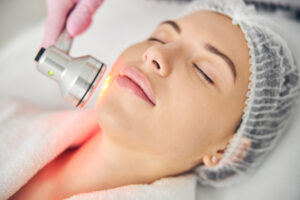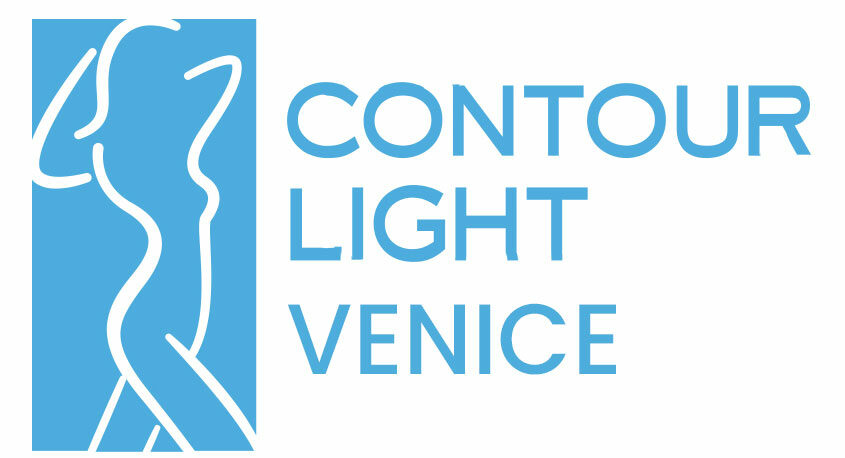Exploring the Possible Side Effects of Contour Light Therapy: What You Need to Know
 Contour Light Therapy is a popular non-invasive treatment that uses LED lights to stimulate fat cells and help the body shed excess weight. The procedure is generally safe and pain-free, making it an attractive option for those who want to lose weight without surgery. However, like any treatment, there may be some side effects that you need to be aware of before undergoing Contour Light Therapy. In this article, we’ll explore the possible side effects of Contour Light Therapy, how to minimize them, and what to do if you experience any adverse reactions.
Contour Light Therapy is a popular non-invasive treatment that uses LED lights to stimulate fat cells and help the body shed excess weight. The procedure is generally safe and pain-free, making it an attractive option for those who want to lose weight without surgery. However, like any treatment, there may be some side effects that you need to be aware of before undergoing Contour Light Therapy. In this article, we’ll explore the possible side effects of Contour Light Therapy, how to minimize them, and what to do if you experience any adverse reactions.
Understanding the Potential Side Effects
Before undergoing Contour Light Therapy, it’s essential to understand the possible side effects. While the procedure is generally safe, there are some risks associated with it that you should be aware of. The most common side effects of Contour Light Therapy include redness, swelling, and bruising in the treated area. These side effects are usually mild and go away on their own within a few days. However, there are also rare side effects that you should be aware of, including skin burns, scarring, and changes in the skin’s texture.
It’s important to note that these side effects are not common and are usually the result of improper use of the device or an inexperienced practitioner. To minimize the risk of side effects, you should choose a reputable clinic that has experience with Contour Light Therapy. Additionally, you should follow all the instructions provided by your practitioner, including any pre- and post-treatment care.
Common Side Effects of Contour Light Therapy
The most common side effects of Contour Light Therapy are redness, swelling, and bruising in the treated area. These side effects are usually mild and go away on their own within a few days. Redness is a common side effect of Contour Light Therapy and is caused by the heat generated by the LED lights. The redness usually subsides within a few hours, but in some cases, it can last for a few days.
Swelling and bruising are also common side effects of Contour Light Therapy. They occur because the LED lights cause the fat cells to release their contents into the body, which can cause inflammation in the surrounding tissues. This inflammation can lead to swelling and bruising in the treated area. These side effects are usually mild and go away on their own within a few days. If you experience severe swelling or bruising, you should contact your practitioner immediately.
Rare Side Effects of Contour Light Therapy
While rare, there are some potential side effects of Contour Light Therapy that should be taken seriously. The most severe of these is skin burns, which can occur if the device is not used properly or if the skin is exposed to the LED lights for too long. Skin burns can cause permanent scarring and changes in the skin’s texture, so it’s essential to choose an experienced practitioner who knows how to use the device correctly.
Other rare side effects of Contour Light Therapy include skin discoloration, allergic reactions, and infections. Skin discoloration can occur if the LED lights are not used properly or if the skin is not properly prepared before treatment. Allergic reactions and infections can occur if the skin is not properly cleaned or if the device is not properly sanitized before use.
Who Should Avoid Contour Light Therapy?
While Contour Light Therapy is generally safe, there are some people who should avoid the treatment. If you have any of the following conditions, you should not undergo Contour Light Therapy:
- Pregnancy or breastfeeding
- Cancer or a history of cancer
- Pacemaker or other implanted medical devices
- Diabetes
- Epilepsy
- Open wounds or infections in the treatment area
If you have any other medical conditions or concerns, you should consult with your doctor before undergoing Contour Light Therapy.
How to Minimize the Risk of Side Effects
To minimize the risk of side effects, it’s essential to choose a reputable clinic that has experience with Contour Light Therapy. Additionally, you should follow all the instructions provided by your practitioner, including any pre- and post-treatment care. Before treatment, your practitioner should assess your skin and discuss any potential risks with you. They should also provide you with instructions on how to prepare for the treatment and what to expect during and after the procedure.
After treatment, you should follow any post-treatment instructions provided by your practitioner. This may include avoiding strenuous exercise, staying hydrated, and avoiding sun exposure in the treated area. If you experience any adverse reactions, such as severe swelling or burning, you should contact your practitioner immediately.
Precautions to Take Before and After Contour Light Therapy
Before undergoing Contour Light Therapy, there are some precautions you should take to prepare for the treatment. These include:
- Avoiding alcohol and caffeine for 24 hours before treatment
- Drinking plenty of water to stay hydrated
- Avoiding sun exposure in the treated area for 24 hours before treatment
- Wearing loose, comfortable clothing to the appointment
After treatment, you should take the following precautions to ensure that your skin heals properly:
- Avoiding strenuous exercise for 48 hours after treatment
- Drinking plenty of water to stay hydrated
- Avoiding sun exposure in the treated area for 24 hours after treatment
- Avoiding tight clothing that may rub against the treated area
How to Choose a Reputable Clinic for Contour Light Therapy
To ensure that you have a safe and successful Contour Light Therapy treatment, it’s essential to choose a reputable clinic. Look for a clinic that has experience with the treatment and employs licensed, trained practitioners. They should also use FDA-approved devices and follow all safety protocols.
Before scheduling an appointment, you should read reviews and ask for references from previous clients. Additionally, you should ask the practitioner about their experience with the treatment and any potential risks or side effects.
Alternatives to Contour Light Therapy
If you’re not a candidate for Contour Light Therapy or are concerned about the potential side effects, there are alternative treatments that you may want to consider. These include:
- CoolSculpting, which uses cold temperatures to freeze and destroy fat cells
- Liposuction, which removes fat cells through surgery
- Body contouring creams and lotions, which claim to stimulate fat loss and tighten the skin
Before choosing an alternative treatment, you should consult with your doctor to determine which option is right for you.
Conclusion: Weighing the Benefits and Risks
Contour Light Therapy can be an effective way to lose weight and achieve a more toned body without surgery or downtime. However, as with any treatment, there are potential side effects that you should be aware of before undergoing the procedure. By choosing a reputable clinic, following all instructions provided by your practitioner, and taking precautions before and after treatment, you can minimize the risk of side effects and ensure a safe and successful treatment. If you’re not a candidate for Contour Light Therapy or are concerned about the potential risks, there are alternative treatments that you may want to consider. Ultimately, the decision to undergo Contour Light Therapy should be made after weighing the benefits and risks and consulting with your doctor.
